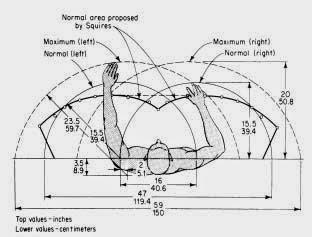Saturday 28 February 2015
macehead links
http://www.academia.edu/1999030/The_surprisingly_late_adoption_of_slotted_perforation_tools_and_what_this_suggests_about_the_Neolithic_outlook
http://collections.museums-sheffield.org.uk/view/objects/asitem/342/4/collections-asc?t:state:flow=d4ebf051-3d3a-428a-9a11-4d0dadf199b9
http://www.biab.ac.uk/contents/28467
http://collections.museums-sheffield.org.uk/view/objects/asitem/342/4/collections-asc?t:state:flow=d4ebf051-3d3a-428a-9a11-4d0dadf199b9
http://www.biab.ac.uk/contents/28467
Friday 27 February 2015
same but different
Antlers are made of true bone that is fed by blood which is carried in the outer velvet covering. Velvet antlers are hot to the touch, with brushy hair and a waxy feeling coating.
A buck in velvet is sensitive and extremely protective of his antlers. These bucks will not fight or spar with their antlers when still in velvet, and if provoked they will rise to strike with their just as deadly hooves instead. Watching a buck in velvet slipping through the woods, you will see him delicately turn to avoid brushing the branches with his antlers.
The growth cycle is regulated by testicular and pituitary hormone. Secretions from the pituitary initiate the growth in April or May. In the northern hemisphere increasing day length also plays a role. Early in their development, antlers have high water and protein content. As they grow, antlers are covered with skin and soft hair called velvet, which carries blood vessels and nerves.
As antlers near the end of the growing process, spongy bone in their outer edges is replaced by compact bone, while their centers become filled with coarse, spongy, lamellar bone and marrow spaces. The velvet dies and is removed in part by the animals rubbing and thrashing their antlers against vegetation. The antlers also are stained during this action, giving them the brown, polished, wooden look.
Males use their full-grown antlers during the breeding season in social interactions in competition for females. In winter, pituitary antler-growth hormone stimulation decreases as day length shortens, and androgen secretion lessens. As a result, the pedicel loses calcium, weakening the point of connection between it and the antler, and eventually the antlers are shed. Males then are without antlers for a few months in late winter until the cycle begins again. Curiously, some cervids have large canine teeth, which are used in sexual displays and fighting. Often species with large canines have small antlers or are missing antlers altogether.
http://donsmaps.com/wolfcamp.html
Sunday 22 February 2015
chartridge occupation
https://southwarknotes.wordpress.com/2015/02/21/regeneration-is-violence/
https://fightfortheaylesbury.wordpress.com/
https://aylesburytenantsfirst.wordpress.com/chartridge-occupation-1-2-2015/
http://onlinelibrary.wiley.com/doi/10.1111/anti.12020/epdf
https://www.marxists.org/archive/marx/works/download/Marx_The_Housing_Question.pdf
Aylesbury Estate
Emic and etic, in anthropology, folkloristics, and the social and behavioral sciences, refer to two kinds of field research done and viewpoints obtained; from within the social group (from the perspective of the subject) and from outside (from the perspective of the observer).
Saturday 21 February 2015
Friday 20 February 2015
Monday 16 February 2015
Sculptors’ Moulders and Art Cast Publishers. Casts taken from the Living and Deceased
http://www.npg.org.uk/research/programmes/british-bronze-founders-and-plaster-figure-makers-1800-1980-1/british-bronze-founders-and-plaster-figure-makers-1800-1980-s.php
http://felicecalchi.blogspot.co.uk/
https://curatorialpracticum.wordpress.com/2014/05/04/copies-in-plaster-the-bust-of-trajan-and-other-works-from-the-johnson-museum/
http://www.marciapointon.org/pdfs/DeathMasks.pdf
http://www.degruyter.com/view/books/9783110216875/9783110216875.fm/9783110216875.fm.xml?format=EBOK
Sunday 15 February 2015
Pompéi à Paris en photosculptures en 1874, 35 Boulevard des Capucines
Pompéi à Paris en photosculptures en 1874
La Semaine des familles écrit le 1er août 187429 :
- On lit en ce moment, sur le boulevard des Capucines, une grande affiche portant ces mots : Pompéi à Paris. Voilà un programme séduisant : entrez dans la Salle des Conférence (dite Salle des Capucines) et vous pourrez constater que ce programme n'est pas menteur.
- C'est bien Pompéi que vous aurez sons les yeux, — Pompéi reproduit par un procédé inusité jusqu'à ce jour. Il ne s'agit plus de la photographie, mais bien de la photosculpture appliquée à la reproduction des monuments.
- Vous savez que la photosculpture est un art qui permet d'obtenir en relief l'effigie des objets avec une exactitude rigoureuse et mathématique. A l'aide de ce procédé, on a reproduit tous les principaux monuments de Pompéi : chacun des modèles ainsi exécuté a environ cinquante centimètres en hauteur et en largeur : il est en mastic.
- Ce relief est colorié de façon à imiter complètement les tons de la nature vraie : on le pose devant une toile peinte qui, par une illusion d'optique, semble se confondre avec lui. Relief et toile sont placés derrière une énorme lentille grossissante.
- Quand on regarde à travers cette lentille, le plan en relief prend des proportions énormes : ce n'est plus un modèle bon à mettre sur la table d'un architecte, c'est la nature elle-même dans toute sa réalité, dans ses proportions vraies. Ni le panorama, ni le diorama, ni le stéréoscope, n'atteignent à de pareils effets : on sent que l'air circule à travers les colonnes, qu'on pourrait gravir ces degrés, passer sous ces voûtes.
- Je suis resté une grande heure à errer de la Maison du poète tragique au Temple d'Isis et du Grand Cirque à la Rue d'Herculanum... J'étais à quatre cents lieues de Paris, et à vingt siècles en arrière.
- Quand, enfin, je suis ressorti sur le boulevard des Capucines, c'est
pour le coup que je me suis cru le jouet d'une illusion : il m'a fallu
un effort pour me rappeler que j'étais bien un Parisien de l'an 1874, et
pour ne pas me trouver un peu plus dépaysé devant le perron de Tortoni que je ne l'étais tout à l'heure devant le Panthéon de la ville antique.
"Nydia, the Blind Flower Girl of Pompeii" was the most popular American sculpture of the nineteenth century. According to Rogers, it was replicated 167 times in two sizes. The subject was drawn from "The Last Days of Pompeii" (1834), a widely read novel by Lord Edward Bulwer-Lytton, which ends with the eruption of Mount Vesuvius in a.d. 79.
stone loaves
loaf - pyroclast - skeuomorph - engraving - scan - screengrab
pompeii
Claude Cahun
1931-2
pompeii
thanks Paul Reilly
Claude Cahun
1931-2
Friday 13 February 2015
ATOMIC PICTURES #3 : 13 février – 6 mars 2015
Common Conduct @ Atomic Pictures
« … a quite remarkable name, oikonomia psuchõn, that is to say, the economy of souls
translated variously as regime, or perhaps
conduct.
Thus
the activity of conducting
of conduction
the way in which one conducts oneself
lets oneself be conducted
is conducted
the way in which one behaves as an effect of a form of conduct
as the action of conducting or of conduction.
A question of manners, the possible manners of being,
the management of possible forms-of-life,
the policing of the regime of the possible.
The economy of souls as a regulated flow between nodes. »
« … a quite remarkable name, oikonomia psuchõn, that is to say, the economy of souls
translated variously as regime, or perhaps
conduct.
Thus
the activity of conducting
of conduction
the way in which one conducts oneself
lets oneself be conducted
is conducted
the way in which one behaves as an effect of a form of conduct
as the action of conducting or of conduction.
A question of manners, the possible manners of being,
the management of possible forms-of-life,
the policing of the regime of the possible.
The economy of souls as a regulated flow between nodes. »
extrait de: Common Conduct
Francis Summers & Louisa Minkin, Common Conduct , 2013 – 06’00 à 08’00
Video HD, Courtesy de l’artiste
Video HD, Courtesy de l’artiste
Thursday 12 February 2015
Luke 14:23 King James Version
23 And
the lord said unto the servant, Go out into the highways and hedges,
and compel them to come in, that my house may be filled.
as far as variable terms are concerned, monads are what enter in to the relation as ‘Objects’, even if for brief moments. They can exist without the relation, and the relation can exist without them. The relation is exterior to variables, as it is the outside of the constant. It is especially complex since it acquires an infinity of variables. The latter are said to be dominated, specifically insofar as they enter into the relation attached to the dominant or constant. When they cease being submitted to this relation, they enter under another, into another vinculum attached to another dominant (unless they are freed from every vinculum). (Deleuze 1993, p. 112)
O’Sullivan, Simon. “FromJoy to Gap: The Accessing of the Infinite by the Finite (Spinoza, Nietzsche,Bergson)”, in On the Production ofSubjectivity. Five Diagrams of the Finite-Infinite Relation, PalgraveMacmillan, London, 2012, pp. 13-27.
as far as variable terms are concerned, monads are what enter in to the relation as ‘Objects’, even if for brief moments. They can exist without the relation, and the relation can exist without them. The relation is exterior to variables, as it is the outside of the constant. It is especially complex since it acquires an infinity of variables. The latter are said to be dominated, specifically insofar as they enter into the relation attached to the dominant or constant. When they cease being submitted to this relation, they enter under another, into another vinculum attached to another dominant (unless they are freed from every vinculum). (Deleuze 1993, p. 112)
O’Sullivan, Simon. “FromJoy to Gap: The Accessing of the Infinite by the Finite (Spinoza, Nietzsche,Bergson)”, in On the Production ofSubjectivity. Five Diagrams of the Finite-Infinite Relation, PalgraveMacmillan, London, 2012, pp. 13-27.
Four Horsemen of the Aufklärung
Je compare cette stratégie à celle du site Les barbares attaquent, fondé par Nicolas Colin, un ancien inspecteur des finances, connu pour son rapport sur la fiscalité du numérique, où il mettait en évidence l’inadéquation du système fiscal face à l’industrie numérique, qu’il décrivait comme des « cavaliers de l’Apocalypse », en l’occurrence les GAFA [acronyme pour Google, Apple, Facebook et Amazon].
En savoir plus sur http://www.lemonde.fr/emploi/article/2015/11/19/bernard-stiegler-ce-n-est-qu-en-projetant-un-veritable-avenir-qu-on-pourra-combattre-daech_4813660_1698637.html#6DChWWM095yuHcF4.99
anthropometry
NEGENTROPY
Willard Gibbs’ 1873 available energy (free energy) graph, which shows a plane perpendicular to the axis of v (volume) and passing through point A, which represents the initial state of the body. MN is the section of the surface of dissipated energy. Qε and Qη are sections of the planes η = 0 and ε = 0, and therefore parallel to the axes of ε (internal energy) and η (entropy) respectively. AD and AE are the energy and entropy of the body in its initial state, AB and AC its available energy (Gibbs free energy) and its capacity for entropy
(the amount by which the entropy of the body can be increased without
changing the energy of the body or increasing its volume) respectively.
| “ | [...] if I had been catering for them [physicists] alone I should have let the discussion turn on free energy instead. It is the more familiar notion in this context. But this highly technical term seemed linguistically too near to energy for making the average reader alive to the contrast between the two things. | ” |
Wednesday 11 February 2015
Friday 6 February 2015
Subscribe to:
Posts (Atom)


























